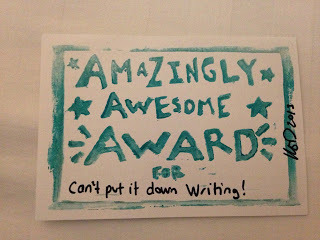Kirby Larson's Blog, page 27
October 17, 2013
From the Office of the Future of Reading
Please help me welcome today's guest blogger, Shaeley Santiago. Shaeley teaches English Language Learners at the high school level in Iowa.
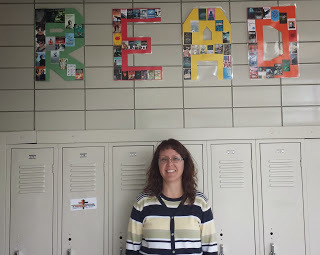 Shaeley Santiago under her favorite word!
Shaeley Santiago under her favorite word!Even ELLs at the highest English proficiency level often do not read at grade level. Many of them come from backgrounds where public libraries are not readily available, and reading, especially for pleasure, is not emphasized. In my experience, many ELLs (even from highly educated backgrounds) are not strongly encouraged to read. So when you don’t have lots of experience reading in your native language and you’re multiple grade levels behind your peers, how does your teacher hook you on reading?
That’s the task I’ve taken on with increasing passion over the past few years. As an avid reader myself, I started by showing students my passion for books as a way to create a culture of reading in my own classroom. I’d like to share a few of those ideas with you in the hopes that they might help you in your work with older students who struggle with reading. One of the first ideas I implemented was a reading survey. I wanted to see how much my students were reading and what types of books they enjoyed most. I used a Google form to simplify collection and analysis of the data as all of my students have school-issued Gmail accounts. (See example of survey here.)
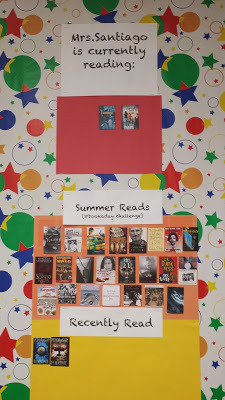
The use of technology is another step I took to encourage the reading culture in my class. I had students set up Goodreads accounts and created a Goodreads group for our class where I asked students to share their book recommendations with each other. When they suggested a book, I printed off the book cover and displayed it on the bulletin board in the classroom.

I also shared my own reading goals with students (over 100 books/year) and my progress through another display in the classroom. This year, that’s overflowed into the halls as I
implemented an idea I learned recently on the monthly Twitter #titletalk chat. I took last year’s book covers from my class display and shaped them into the poster-sized letters
“R-E-A-D” shown in the picture.

Another huge area is helping students select books that are a good match for them. In addition to the obvious reading level match, I think it is even more important for ELLs that the topic is a good fit for them. This could include but is not limited to multicultural books, bilingual books, and graphic novels that provide age-appropriate visuals and are often at a lower reading level. You may need to convince ELLs that graphic novels count for reading, too, though. I’ve found that starting them off with a graphic novel of a classic book like a Shakespeare play is a good way to show them that graphic novels can still be cognitively challenging and not babyish.
These are just a few ideas that I’ve implemented. I’m always looking for new ways to hook my ELLs on reading.
Thank you, Shaeley, for your wonderful insights into getting ELLs hooked on reading.
If you would like to learn more about Shaeley's thoughts on connecting readers and books, follow her on Twitter: @HSeslteacher
Published on October 17, 2013 05:30
October 16, 2013
Wednesday Wisdom

"The world is all gates, all opportunities. Strings of tension waiting to be struck."
Ralph Waldo Emerson
Published on October 16, 2013 06:30
October 15, 2013
From the Office of the Future of Reading
Please join me in welcoming this week's guest blogger Sarah Mulhern Gross. In addition to teaching high school in New Jersey, Sarah is a contributor to the New York Times Learning Network blog, a member of the Monarch Teacher Network, and is owned by two Australian shepherds.
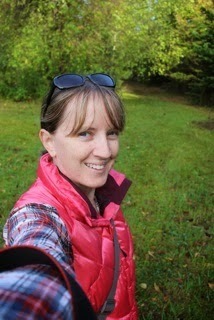 Sarah Mulhern Gross
Sarah Mulhern GrossI always tell people that I've been a voracious reader all my life, but that's not entirely true. I devoured books in elementary school and middle school, but in high school that changed. I still read, of course, but nothing like I did before I walked through those doors. What happened, you may ask? I spent a lot of time thinking about those high school years when I started reading again in college. Why did I stop reading? I clearly missed it, as evidenced by the overflowing piles of books in my dorm room by the end of freshman year. What had stopped the flow of books from 9th to 12th grade?
It dawned on me that a lot changed when I entered high school. Don't get me wrong- my high school years were some of the best of my life. I had amazing, life-changing teachers. I made some of the best friends of my life. And I built a family of amazing classmates. But where were the books?
There were books, but they were mostly whole-class novels. We did not have a school library and instead shared the academic library with the college campus next door. There were no classroom libraries in the school, which was very different from elementary and middle school. And the focus of the school was on STEM, so most of the books that were shared in class were nonfiction. Today I really enjoy reading nonfiction but that was not the case in high school! The last nail in the coffin was my busy schedule. Suddenly there was no time to go to the public library or book store. When I did have time, it was spent on homework or clubs, not reading books.
Now that I teach at my alma mater, I still see some of the same issues. The biggest one is that my students are insanely busy. I’m proud of everything they accomplish and they will change the world someday, but I wish they had a little more time to relax. And I wish they would choose to read sometimes instead of playing Candy Crush. (At least I didn’t have Facebook and Reddit to distract me in high school!)
I do everything I can to create a culture of literacy at my school and I’m blessed to work with amazing colleagues who share my passion. We’ve worked hard to surround our students with books and readers. My classroom library is overflowing and I’m in need of more shelving on a constant basis. In this day and age, too many districts have cut their librarians and library hours so we need more classroom libraries! Solicit donations from parents, community members, and colleagues. Raid the Scholastic Warehouse Sale and library book sales. Making books available to students creates readers!* I love to watch students wander over to the bookshelves between classes or during downtime. Because they are there and readily available, students peruse the shelves and borrow books.
There’s no reason to stop modeling lifelong reading when students enter high school, either! Because of this, I have become a book pusher. I’m always sharing books with my colleagues and telling students what their biology and history teacher recently borrowed from me. Students are always amazed when they can discuss books with content area teachers! I share my Goodreads account with my students and I tweet about the books I am reading. My email signature lists my current favorite reads, so anyone who emails me is hit with a list of great books. My students see that list a few times each day! Everywhere they turn, my students hear about reading and see the adults around them reading. I’m a book-pusher and I’m proud of it!
My colleagues and I also make time to read each day. I expect my students to carry a book with them at all times and to read whenever they have downtime. My colleagues know this and encourage students to take their books out when they finish a test in Latin or a problem set in Algebra 2/Trigonometry. In English, we make time to read a few days each week and we also read the newspaper every day. Independent reading is celebrated and students share their reading with me and their classmates in the form of booktalks and recommendations.
A culture of literacy. A school full of students, teachers, and administrators who read and are proud to share their reading. That’s what every high school should be for every student. Small changes can make a big difference, so start with something small. Share books with students, talk about what you are reading, or participate in #fridayreads on Twitter. Be a book pusher and a proud book nerd! But don’t stop sharing books just because students have reached high school. Lifelong reading needs to be honored and modeled, so make time for reading in high school and show students that you honor reading in your building.
Thank you Sarah for sharing this post. The point you made that I asterisked reminds me of a study I once read that said a good predictor of student success in school is access to books. It sounds like you and your colleagues think outside the box when it comes to surrounding your students with books!
For more of Sarah's thinking about connecting kids and books, follow her on Twitter: @thereadingzone
Published on October 15, 2013 05:30
October 12, 2013
I need a secretary
Yesterday, I accidentally ran two Friend Friday posts on the same day. I feel rotten about that because both Jane Kelley and Susan Hill Long deserve big spotlights shining on them and their work individually.
I have these great plans but limited time and, evidently, an even smaller memory. I hope Jane and Susan will forgive me. Please come back to visit this coming Friday, October 18, when I will re-run Jane's post and the following Friday, October 25, when I will re-run Susan's.
They are lovely people and amazing writers and I really, truly want to you to know about them!
I have these great plans but limited time and, evidently, an even smaller memory. I hope Jane and Susan will forgive me. Please come back to visit this coming Friday, October 18, when I will re-run Jane's post and the following Friday, October 25, when I will re-run Susan's.
They are lovely people and amazing writers and I really, truly want to you to know about them!
Published on October 12, 2013 10:12
October 11, 2013
Friend Friday
I am so honored to introduce Susan Hill Long to you today; you need to read her book. Today. And I'm not the only one who says so: among her many fans is National Book Award winner and writer extraordinaire, Jeanne Birdsall. Take it away, Sue!
 Susan Hill Long, captured at home by her daughter, MollyWhat’s It like?
Susan Hill Long, captured at home by her daughter, MollyWhat’s It like?
When I was a little girl, my family used to play a simple game called What’s it Like? Here’s how to play: one person has in mind an object in the room, and the other players guess what it is. Let’s say the object was that brown afghan, with the popcorn stitch. The game begins like so:
“What’s it like?” someone asks. It’s me.(Now comes the part that always made me feel very odd, very peculiar.) “It’s like you.” (It’s like me?) “It’s like you because it’s knobby.”
One guess, and then the question comes again from the next in line, “What’s it like?” and the round goes on, the players gathering clues until the secret object is discovered. But I’m not knobby, my young self would think. I’m not made of wool. I’m not those things at all. Am I?
On some level, the game would make me question my very knowledge of myself, which even then (especially then?) I knew to be a slippery business. I’d go and climb on the step-stool and look in the mirror and wonder: Who am I? Am I really me? I’d pinch myself—yes, real—and watch for clues.
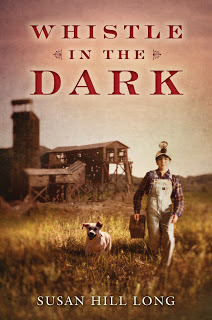
In a scene cut from Whistle in the Dark, the characters Clem and Esther play What’s It Like. Esther asks the question and gathers Clem’s replies and before long guesses correctly his miner’s cap lamp.
I don’t recall why I ended up cutting the game from the book. Probably it didn’t do the work I needed the scene to do, though it would seem to offer some potential—feel free to use it. But the question – what’s it like?—and especially the weird and challenging refrain, it’s like you…, gets at something interesting about writing. In order to write, a person probably needs to want to make a study of all kinds of things, and appreciate the curious, provoking ways in which they collide or connect. To take another look, to collect, to sort by color, by texture, by contrast, by feel and by feeling, and then to shake the gunnysack and sort it all again.
To take what is green about the object, what is blue about yourself —and to ask, what’s it like? What’s it really like? And then, be open to surprise.
Thank you, Sue, for this thought-provoking post and for writing such an utterly captivating book. I still cannot get over how you encapsulated the entire book in the first chapter and yet keep that from the reader until the very end. Brilliant!
 Susan Hill Long, captured at home by her daughter, MollyWhat’s It like?
Susan Hill Long, captured at home by her daughter, MollyWhat’s It like?When I was a little girl, my family used to play a simple game called What’s it Like? Here’s how to play: one person has in mind an object in the room, and the other players guess what it is. Let’s say the object was that brown afghan, with the popcorn stitch. The game begins like so:
“What’s it like?” someone asks. It’s me.(Now comes the part that always made me feel very odd, very peculiar.) “It’s like you.” (It’s like me?) “It’s like you because it’s knobby.”
One guess, and then the question comes again from the next in line, “What’s it like?” and the round goes on, the players gathering clues until the secret object is discovered. But I’m not knobby, my young self would think. I’m not made of wool. I’m not those things at all. Am I?
On some level, the game would make me question my very knowledge of myself, which even then (especially then?) I knew to be a slippery business. I’d go and climb on the step-stool and look in the mirror and wonder: Who am I? Am I really me? I’d pinch myself—yes, real—and watch for clues.

In a scene cut from Whistle in the Dark, the characters Clem and Esther play What’s It Like. Esther asks the question and gathers Clem’s replies and before long guesses correctly his miner’s cap lamp.
I don’t recall why I ended up cutting the game from the book. Probably it didn’t do the work I needed the scene to do, though it would seem to offer some potential—feel free to use it. But the question – what’s it like?—and especially the weird and challenging refrain, it’s like you…, gets at something interesting about writing. In order to write, a person probably needs to want to make a study of all kinds of things, and appreciate the curious, provoking ways in which they collide or connect. To take another look, to collect, to sort by color, by texture, by contrast, by feel and by feeling, and then to shake the gunnysack and sort it all again.
To take what is green about the object, what is blue about yourself —and to ask, what’s it like? What’s it really like? And then, be open to surprise.
Thank you, Sue, for this thought-provoking post and for writing such an utterly captivating book. I still cannot get over how you encapsulated the entire book in the first chapter and yet keep that from the reader until the very end. Brilliant!
Published on October 11, 2013 05:30
October 10, 2013
From the Office of the Future of Reading
Please welcome today's guest blogger, Valerie Stein. Valerie Stein has been Library Media Specialist for the past 10 years at Soundview School in Lynnwood Washington.
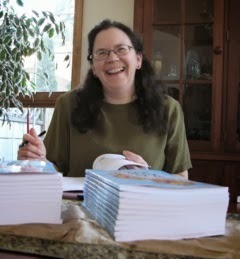 Valerie Stein
Valerie Stein
Growing Powerful Kid Readers: Picture Book Conversations
For the past ten years, I’ve been very fortunate to run the library in our small PreK-8th grade independent school, and to feed my passion for helping to create lovers of books. For me, growing a reader begins with conversation about a book. I’ve discovered the importance of acting on these three things when I share a reading experience with my students:
Put books I’ve read and loved in students’ hands, as well as books I think they will loveHelp students find language to express personal opinions, by asking carefully chosen open-ended questionsListen to their words and observe their reactions during a read aloud
Helping young readers find their own place in the world of books helps to keep them reading, and the act of reading frequently serves to build their reading stamina. If kids are able to express to others what it is they do (and don’t!) enjoy about a book, they become the owners of their reading lives. “Providing students with the opportunity to choose their own books empowers and encourages them,” says Donalyn Miller, author of The Book Whisperer, a book I highly recommend.
Giving students the language to express personal opinions about their choice takes them even farther. When they come to know what draws them into a book, and what keeps them there, they are able to seek help from other readers (adult or otherwise) in choosing books which both nourish and push them.
In addition to the three points above, few tools are needed to structure development of conversations about books. Most important for me in getting started is any collection of good picture books, especially a mix of fiction and non-fiction; artwork plays a big role in our conversations about personal tastes in format and style, so a variety serves best. I use picture books for all ages because they work so well in the hand and in the moment. Conversation quickly reaches a deeper level with a book that begins and concludes before our very eyes; this is important in our limited time together. One example of a collection I use is our state’s picture book award list, but any varied collection of quality picture books will do.
An open mind is also a critical tool in giving students voice and choice. Whenever we share a book, I must watch and listen, and remember my key points from above. I can tell when students are engaged, and I know what I find personally appealing, but my goal is to discover what makes an individual “click” with a book. This means that I set aside my own taste and work to understand and respect another’s.
In the end, my most important task is to keep good conversation going around good books; this is what I’ve found really helps each student grow as an individual reader, thinker and questioner.
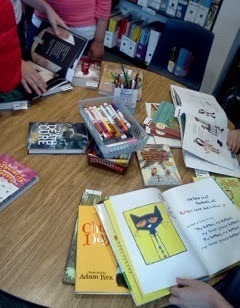
Thank you, Valerie for your insights on how to keep us conversing with kids about books.
You can visit with Valerie on Twitter and on Goodreads. She also keeps a blog called "The Best of It."
 Valerie Stein
Valerie Stein
Growing Powerful Kid Readers: Picture Book Conversations
For the past ten years, I’ve been very fortunate to run the library in our small PreK-8th grade independent school, and to feed my passion for helping to create lovers of books. For me, growing a reader begins with conversation about a book. I’ve discovered the importance of acting on these three things when I share a reading experience with my students:
Put books I’ve read and loved in students’ hands, as well as books I think they will loveHelp students find language to express personal opinions, by asking carefully chosen open-ended questionsListen to their words and observe their reactions during a read aloud
Helping young readers find their own place in the world of books helps to keep them reading, and the act of reading frequently serves to build their reading stamina. If kids are able to express to others what it is they do (and don’t!) enjoy about a book, they become the owners of their reading lives. “Providing students with the opportunity to choose their own books empowers and encourages them,” says Donalyn Miller, author of The Book Whisperer, a book I highly recommend.

Giving students the language to express personal opinions about their choice takes them even farther. When they come to know what draws them into a book, and what keeps them there, they are able to seek help from other readers (adult or otherwise) in choosing books which both nourish and push them.

In addition to the three points above, few tools are needed to structure development of conversations about books. Most important for me in getting started is any collection of good picture books, especially a mix of fiction and non-fiction; artwork plays a big role in our conversations about personal tastes in format and style, so a variety serves best. I use picture books for all ages because they work so well in the hand and in the moment. Conversation quickly reaches a deeper level with a book that begins and concludes before our very eyes; this is important in our limited time together. One example of a collection I use is our state’s picture book award list, but any varied collection of quality picture books will do.
An open mind is also a critical tool in giving students voice and choice. Whenever we share a book, I must watch and listen, and remember my key points from above. I can tell when students are engaged, and I know what I find personally appealing, but my goal is to discover what makes an individual “click” with a book. This means that I set aside my own taste and work to understand and respect another’s.
In the end, my most important task is to keep good conversation going around good books; this is what I’ve found really helps each student grow as an individual reader, thinker and questioner.

Thank you, Valerie for your insights on how to keep us conversing with kids about books.
You can visit with Valerie on Twitter and on Goodreads. She also keeps a blog called "The Best of It."
Published on October 10, 2013 05:30
October 9, 2013
Wednesday Wisdom
Published on October 09, 2013 06:30
October 8, 2013
From the Office of the Future of Reading
Please welcome today's guest blogger, Melissa O'Bryan. Melissa O’Bryan has shared her love of books with fifth graders in Flint, Michigan, for the past 11 years. She has a 7 book weekly limit at the local library, is the author of the blog Wild About Fifth Grade, and is known to stay up way too late most nights finishing one more chapter. Melissa is married to a high school English teacher, and mom to a first and fourth grader.
 Melissa O'Bryan
Melissa O'Bryan
If only we had more time! Wishful thinking, I know. It's nearly impossible to fit it "ALL" in on a daily basis. Teachers everywhere are searching for creative and innovative ways to squeeze more time into their schedule. In my classroom, it's 'time to talk about our reading' that we just don't have enough of. We only have one hour for Reader's Workshop each day. One hour! It's just not enough time for a mini-lesson, independent reading (guided reading and conferring), discussions, journaling, teacher read aloud, shared reading, book recommending.....etc., etc. As time runs out, the "talking about what we're reading" portion gets the ax.
Yikes!
To me, book recommending is the mark of a true reader. All of us book lovers can't wait to recommend the latest book we’ve devoured to our teacher friend or family member. Isn't that what readers do? They talk about and share what they read. Yet lack of time can edge out this instrumental part of Reader’s Workshop.
To resolve this issue, I introduced my students to the world of blogging. My hope is to inspire my readers to ‘talk about their reading’ even when we can’t find the time to ‘fit’ it into our schedule.
Why blogs? My fifth graders love the chance to comment on anything online (hence the underage popularity of facebook, snapchat, instagram, twitter, etc.) Why not give them a fun, safe, educational, inspiring place to do just that?!
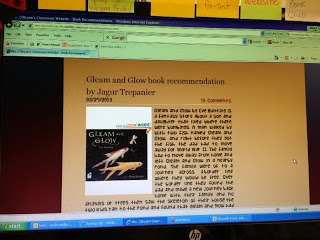
How did I set it all up? It’s fairly easy to create a classroom blog. All you need is an email address and some patience. We use weebly.com but other free blogging websites you could use are kidblog, blogger, or wordpress. The main page of our blog is for posting daily homework assignments and classroom news. I created page links (easy to do) for classroom photos, contact information, and our book recommendations. The students click on the book recommendations link and this is where they post and comment. I have to put in the page password to give them access, but they do the rest.
My advice is to model lots and lots of oral and written book recommendations before you expect the students to begin posting. I gave my class time to practice orally with partners and individually in their reader’s notebooks.
Then I set some requirements. Students must write one book recommendation every three weeks. In a 9-10 week marking period, that's 3 required recommendations (many write more). I also set aside the first 10-15 minutes of every computer lab session for students to log in to our classroom blog, peruse the book recommendations page and comment on 2-3 of their peers' book recommendations. I love reading their conversations and peeking into their reading lives.
I even encourage students to log in at home to read their peer's book recommendations, and they comment at home as well (you can tell by the post comment time). I’ve also begun to hear talk in the classroom during workshop mini-lessons and share time that connects back to the books they know other students are reading.
We’ve started a bin of "Class Recommended Books.” It’s the hottest spot in our classroom library. Some students even bring in the books from home that they blogged about to share with those who commented on their posts.
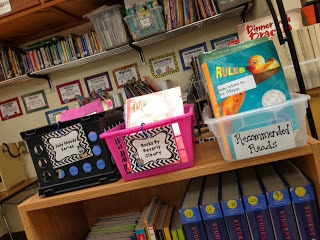
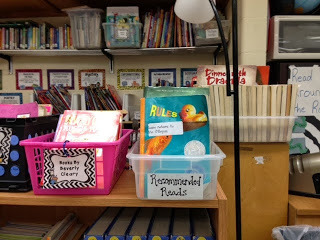
I can’t wait to see their reading lives blossom as we continue to blog about books for the remainder of the year.
In essence, squeezing our book recommendations into computer lab time, is allowing us to still fit it "ALL" in and it’s giving students a relevant place to act and grow as real readers. I even plan to keep our website alive all summer for students to continue to post and comment to each other about their summer reads!
I hope blogging about books in your classroom will inspire your readers to always find the ‘time’ to talk about reading!
Thanks Melissa for sharing your tips for trying to fit it "ALL" in when it comes to reading time in the classroom.
You can check in on Melissa at her blog wildaboutfifthgrade; on Facebook;or on Twitter.

 Melissa O'Bryan
Melissa O'BryanIf only we had more time! Wishful thinking, I know. It's nearly impossible to fit it "ALL" in on a daily basis. Teachers everywhere are searching for creative and innovative ways to squeeze more time into their schedule. In my classroom, it's 'time to talk about our reading' that we just don't have enough of. We only have one hour for Reader's Workshop each day. One hour! It's just not enough time for a mini-lesson, independent reading (guided reading and conferring), discussions, journaling, teacher read aloud, shared reading, book recommending.....etc., etc. As time runs out, the "talking about what we're reading" portion gets the ax.
Yikes!
To me, book recommending is the mark of a true reader. All of us book lovers can't wait to recommend the latest book we’ve devoured to our teacher friend or family member. Isn't that what readers do? They talk about and share what they read. Yet lack of time can edge out this instrumental part of Reader’s Workshop.
To resolve this issue, I introduced my students to the world of blogging. My hope is to inspire my readers to ‘talk about their reading’ even when we can’t find the time to ‘fit’ it into our schedule.

Why blogs? My fifth graders love the chance to comment on anything online (hence the underage popularity of facebook, snapchat, instagram, twitter, etc.) Why not give them a fun, safe, educational, inspiring place to do just that?!

How did I set it all up? It’s fairly easy to create a classroom blog. All you need is an email address and some patience. We use weebly.com but other free blogging websites you could use are kidblog, blogger, or wordpress. The main page of our blog is for posting daily homework assignments and classroom news. I created page links (easy to do) for classroom photos, contact information, and our book recommendations. The students click on the book recommendations link and this is where they post and comment. I have to put in the page password to give them access, but they do the rest.
My advice is to model lots and lots of oral and written book recommendations before you expect the students to begin posting. I gave my class time to practice orally with partners and individually in their reader’s notebooks.
Then I set some requirements. Students must write one book recommendation every three weeks. In a 9-10 week marking period, that's 3 required recommendations (many write more). I also set aside the first 10-15 minutes of every computer lab session for students to log in to our classroom blog, peruse the book recommendations page and comment on 2-3 of their peers' book recommendations. I love reading their conversations and peeking into their reading lives.
I even encourage students to log in at home to read their peer's book recommendations, and they comment at home as well (you can tell by the post comment time). I’ve also begun to hear talk in the classroom during workshop mini-lessons and share time that connects back to the books they know other students are reading.
We’ve started a bin of "Class Recommended Books.” It’s the hottest spot in our classroom library. Some students even bring in the books from home that they blogged about to share with those who commented on their posts.


I can’t wait to see their reading lives blossom as we continue to blog about books for the remainder of the year.
In essence, squeezing our book recommendations into computer lab time, is allowing us to still fit it "ALL" in and it’s giving students a relevant place to act and grow as real readers. I even plan to keep our website alive all summer for students to continue to post and comment to each other about their summer reads!
I hope blogging about books in your classroom will inspire your readers to always find the ‘time’ to talk about reading!
Thanks Melissa for sharing your tips for trying to fit it "ALL" in when it comes to reading time in the classroom.
You can check in on Melissa at her blog wildaboutfifthgrade; on Facebook;or on Twitter.

Published on October 08, 2013 05:30
October 3, 2013
From the Office of the Future of Reading
Please welcome guest blogger, Justin Stygles! Justin is a grade 5/6 ELA/humanities teacher in a rural New England community where he has taught for eleven years. He also spends his summer working at a daycare in Windham, ME. He is a National Board Certified teacher candidate and an occasional blog contributor to the Nerdy Book Club. His educational passions are writing about the classroom and exploring new methods to encourage students to read and write. He adamantly believes that success in and outside of the classroom is not possible without his students and he thanks everyone of them, current, past, and future. Justin collaborates with teachers in the Maine Reading Association, IRA, and NCTE.
 Justin Stygles
Justin Stygles
In our class, reading and books are meant to assist boys acquire a sense of self. That can be as privately or as publicly as they want it to be. Boys require nurturing in this area, more so than most people give credit to. Boy readers, especially the struggling reader, will do everything he can to disguise his reading values, abilities, and comprehension, if there is any inkling he will be deemed inferior, wrong, or excluded. Protection of bravado and image (self) is very important. This year we devised a class motto to give boys, and all students, a sense of security, whether reading or any other subject: "Take a risk. Read a book you didn't think you'd be interested in or write something that will amaze the world.” With this motto, students support each other's risks and inquire about each other's reading. I have a boy this year who loved listening to Hattie Big Sky - listening, where a student follows along in a text as a CD plays (reading for the auditory learner) – in fifth grade. Mandated reading assessments SUGGESTED he is a third grade reader at the footstep of sixth grade. He came to class horrified because in “Mr. Stygles's class” you have to read 40 books. He was sure he hadn't read that many books from grades 3-5 and presumed his reading death from the start.

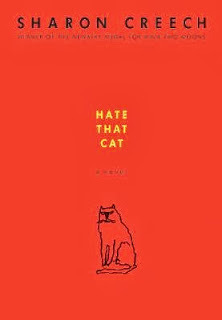
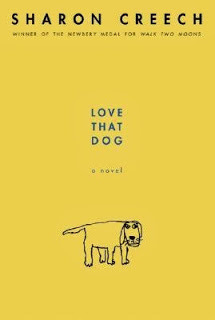
His preconceived notion of self, verified by continuous assessment and repeated intervention attempts, allowed him to believe that he would fail as a reader, no matter what. Fast forward four weeks into school: he has already completed three books --Love that Dog and Hate That Cat by Sharon Creech, and How to Eat Fried Worms, by Thomas Rockwell -- and, based on classmates' recommendations, is now reading Granny Torrelli Makes Soup. Not bad for a “third grade reader” who hated reading. (Did he hate reading or did he hate who he thought he was as a reader?) Oh! He can't wait to listen and follow along with Hattie Ever After. He is well on his way to 40 books. Implicit in the aforementioned example is that a boy likes a “girls'” book. For many boys, because covers still sell books, Hattie Big Sky is a girls' book. Sure, the main character is a girl, but in the entire story, Hattie could easily have existed as a boy.

Last year, boys faced a female protagonist in our final read aloud of the year, yet not one boy (of 65 students total) objected to Juniper Berry, by M.P. Kozlowsky, where the main character is a girl, who, commonly enough, fell in love with a boy named Giles. The boys liked this book because of the relationship, as friends, between Juniper and Giles and the strong “save the family” element. This is important since so many intermediate level books contain a boy and girl pairing to overcome a common challenge. Boys like this kind of material and want to feel comfortable reading such content. In class we try to break from the norm and allow boys to enjoy drippy or gushy, or as they would say “awkward,” books. Truthfully, the boys couldn't wait to see how Juniper would deal with Skeskyl, nor could they wait to see what would become of Juniper and Giles, perfectly natural ambitions of boys or girls. In fact, the whole adventure ties right into what boys dig about reading. They loved this book which might have been ignored based on preconceived notions.
In the end, boys want to find a sense of self in reading. To do this, they need to have positive reading experiences and associate with characters. That is why, when my boys burst out in tears one page 137 of The Boy On the Porch by Sharon Creech last week, in a class read aloud, we clapped for him. He took a risk, fell in love with a book and he fell in love with reading.
Thank you so much, Justin, for this poignant reminder not to judge a book by its cover -- or a reader by his (or her!) gender! I will never forget your comment about that young man hating who he was as a reader, rather than hating reading. My heart breaks that we adults might have done something like that to a young person.
If you want to hear more of Justin's thoughts about connecting kids and books, you can follow him on Twitter: @JustinStygles.
 Justin Stygles
Justin Stygles
In our class, reading and books are meant to assist boys acquire a sense of self. That can be as privately or as publicly as they want it to be. Boys require nurturing in this area, more so than most people give credit to. Boy readers, especially the struggling reader, will do everything he can to disguise his reading values, abilities, and comprehension, if there is any inkling he will be deemed inferior, wrong, or excluded. Protection of bravado and image (self) is very important. This year we devised a class motto to give boys, and all students, a sense of security, whether reading or any other subject: "Take a risk. Read a book you didn't think you'd be interested in or write something that will amaze the world.” With this motto, students support each other's risks and inquire about each other's reading. I have a boy this year who loved listening to Hattie Big Sky - listening, where a student follows along in a text as a CD plays (reading for the auditory learner) – in fifth grade. Mandated reading assessments SUGGESTED he is a third grade reader at the footstep of sixth grade. He came to class horrified because in “Mr. Stygles's class” you have to read 40 books. He was sure he hadn't read that many books from grades 3-5 and presumed his reading death from the start.



His preconceived notion of self, verified by continuous assessment and repeated intervention attempts, allowed him to believe that he would fail as a reader, no matter what. Fast forward four weeks into school: he has already completed three books --Love that Dog and Hate That Cat by Sharon Creech, and How to Eat Fried Worms, by Thomas Rockwell -- and, based on classmates' recommendations, is now reading Granny Torrelli Makes Soup. Not bad for a “third grade reader” who hated reading. (Did he hate reading or did he hate who he thought he was as a reader?) Oh! He can't wait to listen and follow along with Hattie Ever After. He is well on his way to 40 books. Implicit in the aforementioned example is that a boy likes a “girls'” book. For many boys, because covers still sell books, Hattie Big Sky is a girls' book. Sure, the main character is a girl, but in the entire story, Hattie could easily have existed as a boy.

Last year, boys faced a female protagonist in our final read aloud of the year, yet not one boy (of 65 students total) objected to Juniper Berry, by M.P. Kozlowsky, where the main character is a girl, who, commonly enough, fell in love with a boy named Giles. The boys liked this book because of the relationship, as friends, between Juniper and Giles and the strong “save the family” element. This is important since so many intermediate level books contain a boy and girl pairing to overcome a common challenge. Boys like this kind of material and want to feel comfortable reading such content. In class we try to break from the norm and allow boys to enjoy drippy or gushy, or as they would say “awkward,” books. Truthfully, the boys couldn't wait to see how Juniper would deal with Skeskyl, nor could they wait to see what would become of Juniper and Giles, perfectly natural ambitions of boys or girls. In fact, the whole adventure ties right into what boys dig about reading. They loved this book which might have been ignored based on preconceived notions.
In the end, boys want to find a sense of self in reading. To do this, they need to have positive reading experiences and associate with characters. That is why, when my boys burst out in tears one page 137 of The Boy On the Porch by Sharon Creech last week, in a class read aloud, we clapped for him. He took a risk, fell in love with a book and he fell in love with reading.
Thank you so much, Justin, for this poignant reminder not to judge a book by its cover -- or a reader by his (or her!) gender! I will never forget your comment about that young man hating who he was as a reader, rather than hating reading. My heart breaks that we adults might have done something like that to a young person.
If you want to hear more of Justin's thoughts about connecting kids and books, you can follow him on Twitter: @JustinStygles.
Published on October 03, 2013 05:30
October 2, 2013
Wednesday Wisdom
Published on October 02, 2013 06:30


